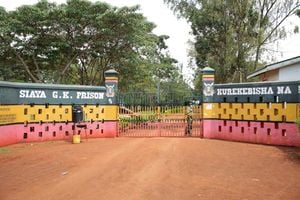Address gendered ageism to embrace equity for older women

Elderly women. Violence and abuse seem to weigh heavier for older women in rural areas.
What you need to know:
- Women's access to education, employment, and political participation is highly restricted.
- As women grow older, the gender disparities manifest in gendered ageism.
It is fair to posit that the political, economic, and social foundations of all our communities must be shaken and reorganised (interrogated, challenged, and supported) in the design and implementation of laws, policies, programmes, and initiatives addressing older women across multiple themes that define the lives of women from childhood to old age.
Indeed, women are important actors who can no longer be ignored in the development discourse. The discrimination that young girls face at birth, and progresses through the years, manifests in one of its worst forms, namely gendered ageism.
The ideals expressed in this year’s theme of International Women’s Day, Embrace Equity, are at risk of not being realised anytime soon.
In addressing the issue of gendered ageism, it is through the interaction of various legislative, judicial and administrative functions that bears the greater responsibility in the “duty” that rests with us all to ensure gender equity is attained.
Countries continue to churn out blueprint after another to guide their development ambitions even as they work with the community of nations in the achievement of Agenda 2030, the Sustainable Development Goals (SDGs) and related regional and national blueprints for development such as the African Union Agenda 2063.
In what may be dismissed as a cliché, it is a fact that women constitute more than 50 per cent of the world’s population. The lack of gender equity locks half the population of Africa out of its development agenda.
There is, therefore, urgency to address broad gender inequality and disparities on issues such as education, health, income security, climate change, governance, and the now ever-present humanitarian crises.
Cultural beliefs
Whereas gendered ageism cuts across the rural-urban divide, the situation is particularly compounded in rural areas, where cultural practices and beliefs largely hold sway.
As a result, women's access to education, employment, and political participation is highly restricted. As women grow older, the gender disparities manifest in gendered ageism.
HelpAge International defines gendered ageism—in a study that it commissioned last year on Older women’s lived experiences of gendered ageism—as the intersectionality of age and gender bias and discrimination.
The findings of this study indicate that most of the older women interviewed had experienced gendered ageism at least once in their lifetime.
Their experiences are often exacerbated by personal and contextual factors such as health, financial status, marital or civil status, place of residence, access to work, loss or absence of family members, and sociocultural norms.
Cumulatively, therefore, older women are more likely to experience gendered ageism than both older and younger men and younger women.
Another major challenge facing older women is violence and abuse.
There have been high rates of gender-based violence recently, with one in five women of all ages experiencing physical or sexual violence at some point in their lives. Violence and abuse seem to weigh heavier for older women in rural areas.
Despite these challenges, there have been some positive developments in recent years.
Governments have introduced several measures aimed at promoting women's rights and equality, including affirmative action policies, and quotas for women in political decision-making.
In addition, civil society organisations and grassroots movements have been working to raise awareness of women's rights and support women subjected to violence and abuse.
These developments are expected to change some underpinnings of discrimination and gender inequality that, in turn, give rise to gendered ageism.
To ensure the status quo changes for the better, therefore, there is a need for government and civil society to prioritise the rights of older women. This could include increasing access to support services and social protection such as pensions, healthcare and housing.
In addition, there needs to be a concerted effort to challenge and change cultural attitudes towards older women. There is a further need to prioritise awareness campaigns that target harmful gender stereotypes, and ageist and discriminatory attitudes towards older women in particular. Laws are important to address this runaway ageism and the adverse targeting of older women.
At an international level, member states of the United Nations (UN) must support and adopt a UN convention that: establishes the rights to equality and non-discrimination on the basis of age; obligates member states to be proactive in tackling gendered ageism; and identifies and removes barriers to equal participation for women of all ages in all areas of life. Such a convention would draw from existing human rights standards and treaties and would be implemented at the national level.
The implementation of the existing laws and policies, including the Protocol to the African Charter on Human and Peoples’ Rights on the Rights of Older Persons in Africa (AU Protocol on Older Persons), which Kenya has already ratified. We will then have begun to firmly step towards embracing equity for older women.
The writer is the Global Initiatives Lead & Africa Regional Representative at HelpAge International; [email protected]; @agengocarole





